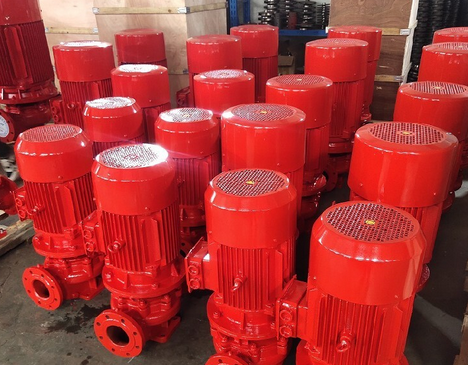The role of fire hydrant pump
Fire hydrant pumps play a vital role in fire protection systems, and their main functions can be summarized as follows:
1. Provide stable and sufficient water source pressure
Core function: Fire hydrant pumps are water pumps designed for fire water systems (including indoor fire hydrants and outdoor fire hydrants). Their main function is to provide stable and sufficient water source pressure for fire protection systems. This function ensures that firefighters can quickly and effectively use fire hydrants to extinguish fires when a fire occurs.
Application range: Fire hydrant pumps are widely used in fire protection systems in various buildings, factories, warehouses, docks, airports and other places. Especially in high-rise buildings and large public facilities, the role of fire hydrant pumps is particularly important, because once a fire occurs in these places, the difficulty of fire fighting will be greatly increased, and a fast and large amount of water source is required for fire fighting.
2. Pressurized water delivery
Working principle: Fire hydrant pumps are usually centrifugal pumps driven by motors. When the fire protection system needs water, the motor starts and drives the pump shaft to rotate, so that water flows from the pump inlet to the outlet under the action of centrifugal force, and a certain pressure is formed at the same time. This pressure is sufficient to transport water to fire hydrants far away from the pump room for use by firefighters.
Performance parameters: The performance parameters of fire hydrant pumps include flow rate, pressure, matching power and caliber. For example, the flow rate range of the conveyed liquid is generally 5-80L/s, the pressure range is 0.2-2.25MPa, the matching power range is 1.5-200kW, and the caliber range is Ф50-Ф250mm. The selection of these parameters needs to be determined according to factors such as the scale, purpose, and fire protection level of the building.
3. Ensure the smooth progress of firefighting work
Performance stability: The stability of the performance of the fire hydrant pump is directly related to the effect of fire fighting. If the fire hydrant pump fails or the performance is unstable at a critical moment, it will seriously affect the progress of fire fighting and may even cause the spread and expansion of the fire.
Maintenance: In order to ensure that the fire hydrant pump can work normally when a fire occurs, regular maintenance and maintenance are essential. This includes checking the operating condition of the motor, cleaning the inlet and outlet of the pump, and checking the sealing of the pipeline. In addition, regular trial runs are required to ensure the stable performance of the pump.

4. Classification and selection
Classification: Fire hydrant pumps can be divided into vertical single-stage, vertical multi-stage, horizontal multi-stage, horizontal single-stage, etc. according to the structural form. Different types of fire hydrant pumps can be selected according to different application occasions and needs.
Selection basis: When selecting a fire hydrant pump, it is necessary to determine the type, flow rate, head and other parameters of the pump based on factors such as the scale, purpose, and fire protection level of the building. At the same time, the installation of the fire hydrant pump also needs to comply with relevant fire protection regulations, including the setting of the pump room, the layout of the pipeline, and the electrical control, which all need to take into account factors such as fire prevention, explosion prevention, and corrosion prevention.




